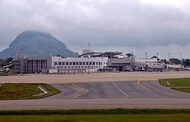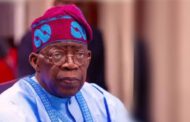The Monetary Policy Committee of the Central Bank of Nigeria broke with the Minister of Finance Mrs Kemi Adeosun who had indicated Federal Government’s desire for a cut in the interest rates by leaving the benchmark rate unchanged.
The Governor of the CBN, Mr.Godwin Emefiele, in justifying the position of the MPC said that rate cuts in the past did not result in banks giving credits to the real sectors of agriculture and manufacturing, as instructed.
He spoke to the media at the end of the Monetary Policy Committee ( MPC), meeting in Abuja.
The committee had after a two-day meeting that ended on Tuesday decided to to retain all the monetary policy instruments at their previous levels of the Monetary Policy Rate (MPR) at 14.00 per cent; Cash Reserve Rate (CRR) at 22.5 per cent; Liquidity Ratio at 30.00 per cent; and Asymmetric Window at 200 and -500 basis points around the MPR.
In a communiqué he read after the the meeting at the CBN headquarters in Abuja, Emefiele N said all 10 MPC members voted to retain the policy instruments having assessed the relevant risks, and concluded that “the economy continues to face elevated risks on both price and output fronts.”
To arrive at the decisions, he said the committee considered and acknowledged the weak macroeconomic performance and the challenges confronting the economy, but noted that the MPC had consistently called attention to the implications of the absence of robust fiscal policy to complement monetary policy in the past.
He said the Committee also assessed the impact of its decision to tighten the stance of monetary policy by raising the MPR in July 2016.
“At the time, the Committee understood the complexity of the challenges facing the economy and the difficulty of arriving at an optimal policy mix to address rising inflation and economic contraction, simultaneously,” he said.
Adeosun had on Monday said that the government would prefer a lowered interest rate to enable the government borrow locally to offset the risks of dollar-denominated borrowings and boost domestic financial market.
Even though she made it clear that it was at the behest of the CBN which has a measure of autonomy to take whatever macroeconomic decisions it thought best for Nigeria, it was seen by pundits given the timing to be a prodding on the apex bank to take respect the government’s wish.
According to the comminique, “The Committee also recognized that monetary policy had been substantially burdened since 2009 and had been stretched. The Committee noted that new capital flows into the economy, approximately US$1 billion, had come in since July, while month-on-month inflation has declined continuously since May 2016. Against this background, members reemphasized the need to prioritize the use of monetary policy instruments in dealing essentially with stability issues around key prices (consumer prices and exchange rate) as prerequisites for growth.
“The MPC noted that stagflation is indeed a very difficult economic condition with no quick fixes: having been imposed by supply shocks as well as fiscal and current account (twin) deficits. Consequently, the policy framework must be reengineered urgently to provide a lever for reversing the negative growth trend. While the imperative for ensuring financial system stability remains, the MPC reiterated the fact that monetary policy alone cannot move the economy out of stagflation.
“The MPC considered the numerous analysis and calls for rates reduction but came to the conclusion that the greatest challenge to the economy today remains incomplete fiscal reforms which raise costs, risks and uncertainty. The calls came mainly from the believe that reducing interest rates will spur credit growth, not only in the private sector but also by the public sector, which will help provide liquidity to stimulate consumption and investment spending. The Committee was of the view that in the past, the MPC had cut rates to achieve the above objectives; but found that rather than deploy the available liquidity to provide credit to agriculture and manufacturing sectors, the rate cuts provided opportunities for lending to traders who deployed the same liquidity in putting pressure on the foreign exchange market which had limited supply, thus pushing up the exchange rate.
“With respect to providing opportunity to the public sector to borrow at lower rates to boost consumption and investment spending, the Committee agreed that while it was expected to stimulate growth through aggressive spending, doing so without corresponding efforts to boost industrial output by taking actions to deepen foreign exchange supply for raw materials will not help reduce unemployment nor would it boost industrial capacities. The Committee was also of the view that consumer demand for goods which will be boosted through increased spending may indeed be chasing too few goods which may further exacerbate the already heightened inflationary conditions. The urgency of a monetary-fiscal policy retreat along with trade and budgetary policy, to design a comprehensive intervention mechanism is long overdue.
“The Bank has since 2009 expanded its balance sheet to bail out the financial system and support growth initiatives in the economy. While stimulating economic growth and creating a congenial investment climate always is and remains essentially the realm of fiscal policy; monetary policy in all cases only comes in to support sound fiscal policy. Nevertheless, the Bank has and shall continued to deploy its development finance interventions to complement the overall effort of fiscal policy towards reinvigorating the economy. The interest rate decisions of the Bank are, therefore, anchored on sound judgment, fundamentals and compelling arguments for such policy interventions.
The Committee also feels that there was the need to continue to encourage the inflow of foreign capital into the economy by continuing to put in place incentives to gain the confidence of players in this segment of the foreign exchange market. Consequently the Committee considers that loosening monetary policy now is not advisable as real interest rates are negative, pressure exists on the foreign exchange market while inflation is trending upwards.
“The Committee noted the positive response of the deposit money banks (DMBs) to the Bank’s call for increased credit to the private sector between July and August. As the growth in the monetary aggregates spiked above their provisional benchmarks, headline inflation continued its upward trajectory in August 2016, and now close to twice the size of the upper limit of the policy reference band. Supply side factors including energy and utility prices, transportation and input costs, have continued to add to consumer price pressures. Members emphasized that improved fiscal activities, especially, the active implementation of the 2016 Federal Budget, and payment of salaries by states and local governments, will go a long way in contributing to economic recovery. In the same direction, the Committee urged the fiscal authorities to consider tax incentives as a stimulus on both supply and demand sides of economic activities
On outlook, he said the data available to the Committee and forecasts of key variables suggested that the outlook for inflation in the medium term appears benign.
“First, month-on-month inflation has since May 2016 turned the curve; second, harvests have started to kick-in for most agricultural produce and should contribute to dampening consumer prices in the months ahead; and third, the current stance of monetary policy is expected to continue to help lock-in expectations of inflation which, has started to improve with the gradual return of stability in the foreign exchange market. In this light, the MPC believes that as inflows improve, the naira exchange rate should further stabilize. Overall, the major pressure points remain the challenges in the oil sector (production and prices), output contraction, and other financial system vulnerabilities as well as foreign exchange shortage,” he said.














